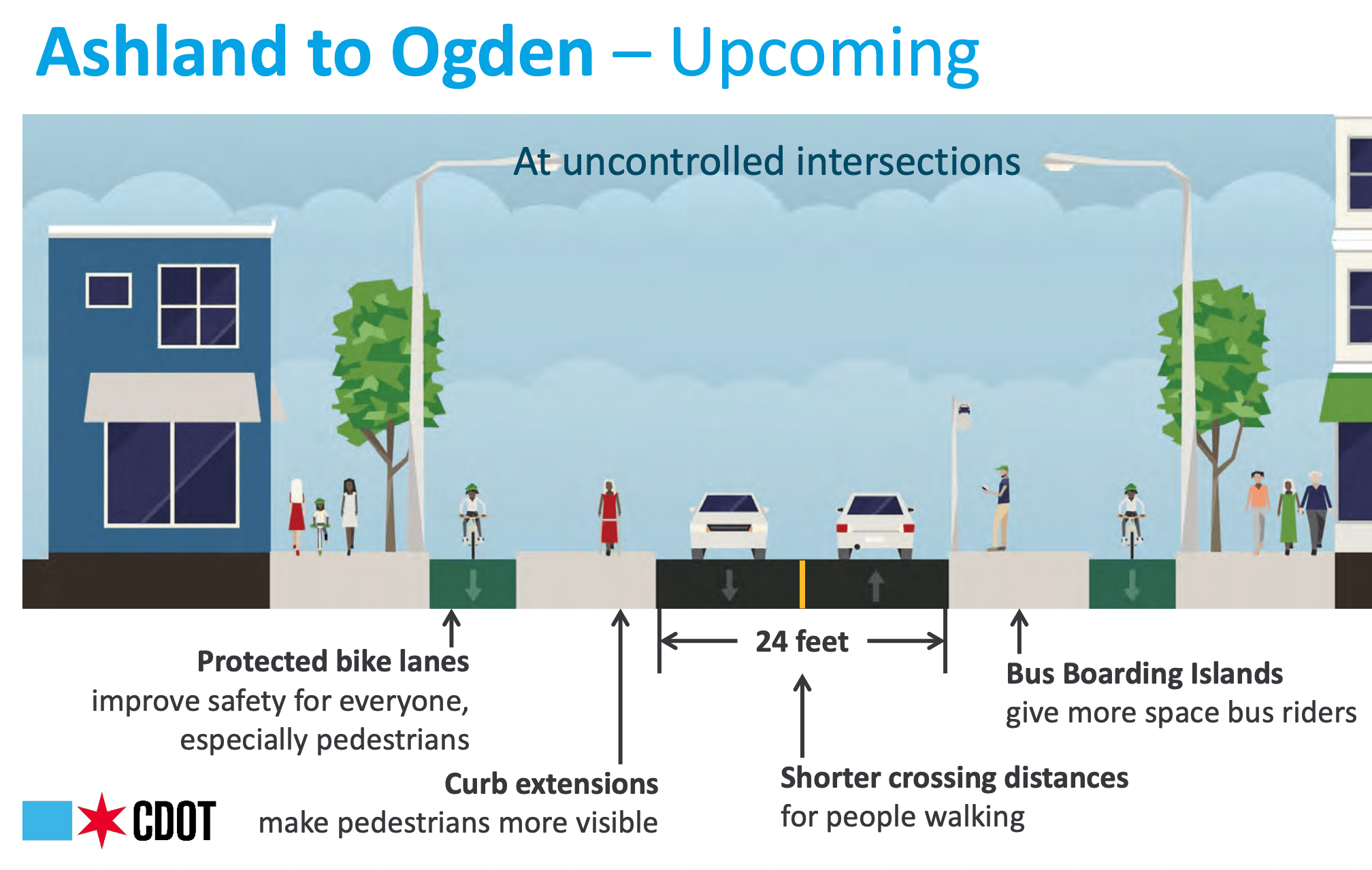This evening, Wednesday, June 28, 5:30 p.m. at Smith Park, 2526 W. Grand Ave., the Chicago Department of Transportation and Ald. Gilbert Villegas (36th) will host a follow-up meeting on the Grand Avenue Complete Streets project. Under the new Chicago ward boundaries that went into effect earlier this year, the 36th Ward, aka the "pool noodle," is a long, skinny district largely composed of land near Grand Avenue, a mostly northwest-southeast diagonal street, between Sayre Avenue (7000 W.) and Wood Street (1800 W.) As such, making Grand a safer route for all road users – pedestrians, bike riders, bus users, and drivers – is a crucial issue for the district.
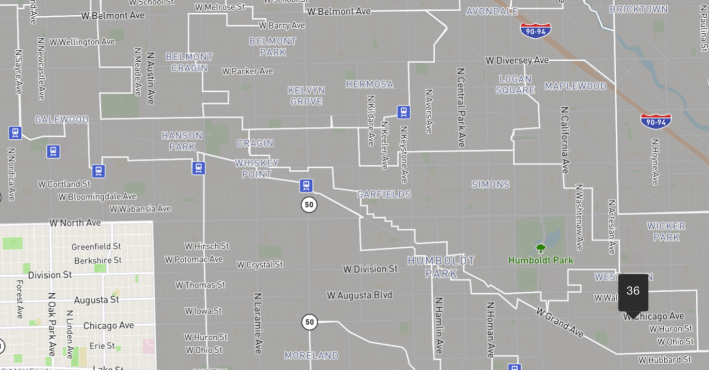
The upcoming upgrades to Grand are planned between Chicago Avenue (800 N., about 2900 W.) and Ogden Avenue (500 N., about 1300 W.) According CDOT, improvements will include:
- Improved pedestrian facilities including raised crosswalks, shorter crossings, and countdown timers at stoplights
- Protected bike lanes
- Improved CTA bus stops
- Wider sidewalks and street trees
- New LED street lighting
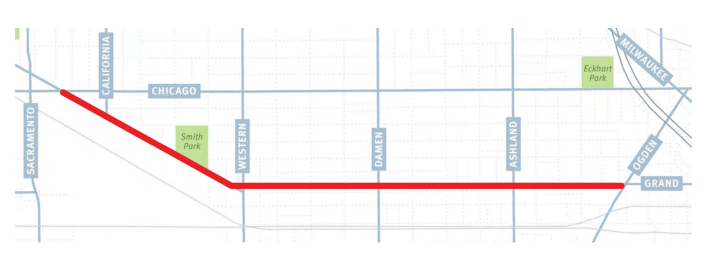
An initial community meeting was held about the project several weeks ago. As shown below, Chicago crash data indicates that protected lanes have been very effective for reducing collisions in our city.
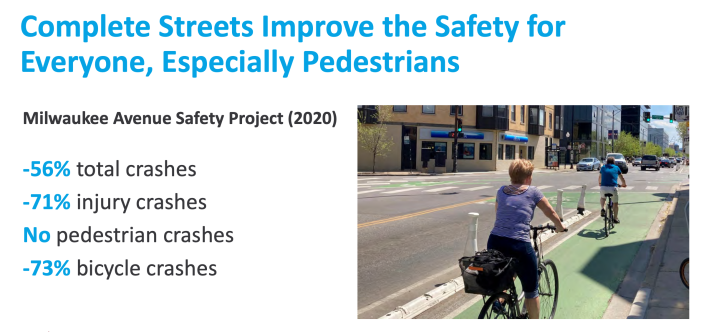
But, as has been the case with other local protected lanes, there's been pushback to the Grand PBL plan from some local business and residents, with some voicing concerns at the previous meeting. CDOT staffers have met with some of these individuals and some adjustments have been made, hopefully not watering the project down too far. Advocacy Groups like Chicago Family Biking and Chicago, Bike Grid Now! have urged bike riders to show up to tonight's follow-up meeting to support the original vision for robust protected bike lanes.
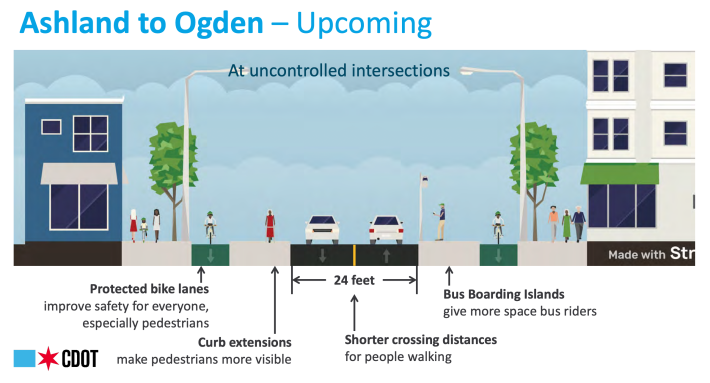
"As someone who used to live on Grand Avenue in West Town, I witnessed some pretty terrifying behavior from motorists," said Stephanie Reid, a volunteer with Chicago Family Biking. "Speeding is rampant and drivers rarely ever stop for pedestrians in crosswalks. Even the relatively new stop signs at Grand and Hoyne [Avenue, 2100 W.] are often ignored. These conditions make Grand quite scary for anyone attempting to travel outside of a car, whether it be by foot, public transit, or bicycle."
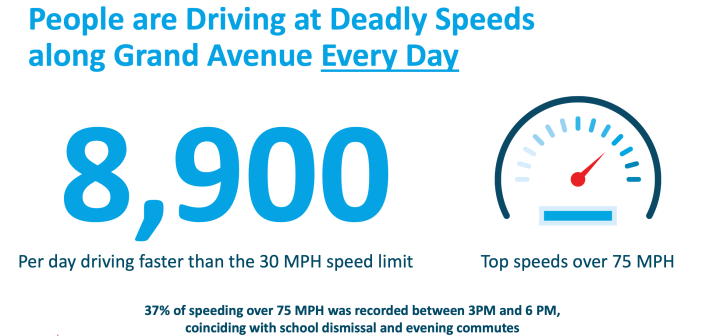
Some business owners and neighbors are opposed to the replacement of car parking with protected lanes on some stretches of Grand. But Reid notes, "Street parking on Grand is underutilized and as such, CDOT should absolutely redistribute some of that space to calm traffic and make the street safer and more pleasant for pedestrians and cyclists."
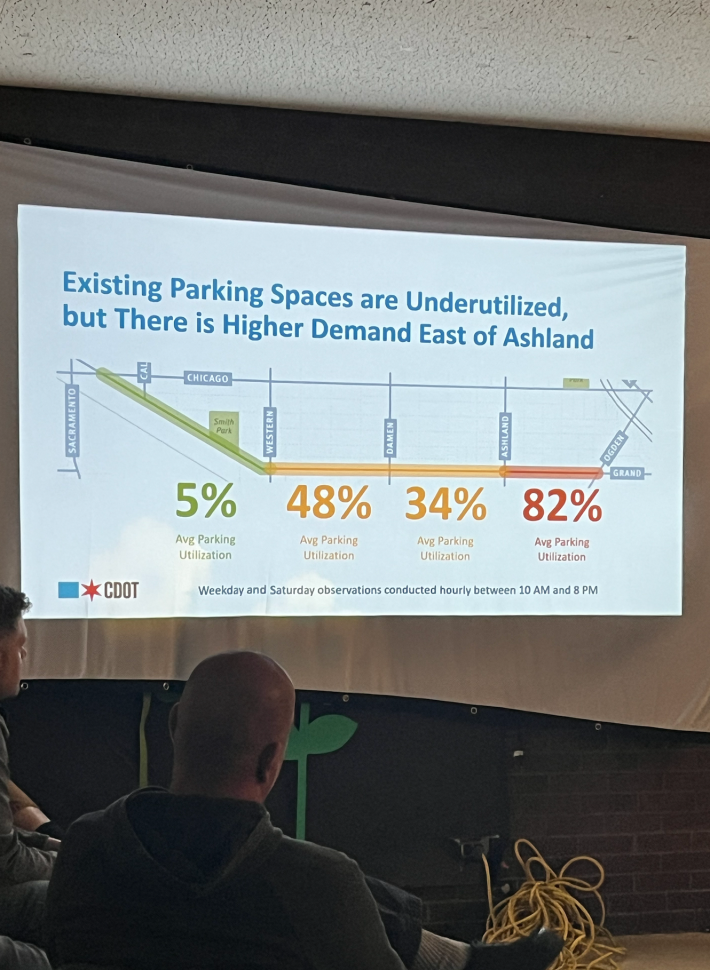
Reid added that some critics of the project argue that people on bikes should use Hubbard Street (400 N.), a city-designated bike route a block south of Grand in this area instead. But she noted that Hubbard lacks protection, and the bike route ends at Damen Avenue (2000 W.) "While biking on Hubbard with my child, I have been close-passed and harassed by people driving cars. The proposed protected lanes on Grand would provide a comfortable and safe environment for children, adults, and elderly bicyclists to get around."
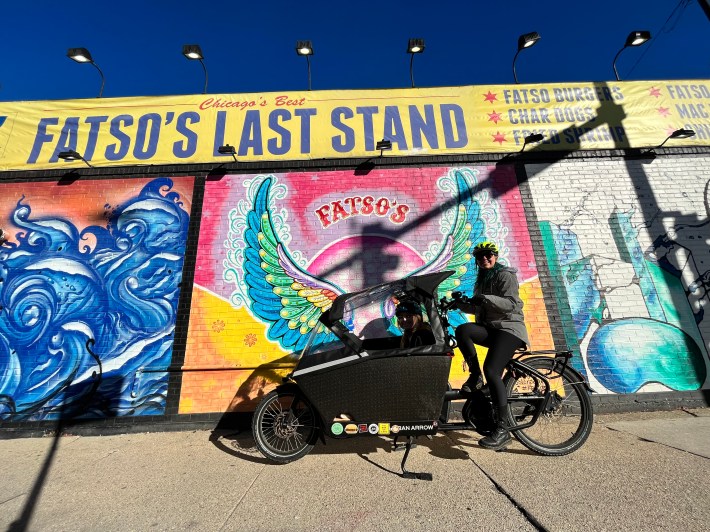
"Right now, there is a desperate need to protect vulnerable road users from ever-increasing traffic violence and to reduce car dependency to combat climate change," Reid concluded. "The Grand Ave Complete Streets project is a step in the right direction in reaching these goals."
